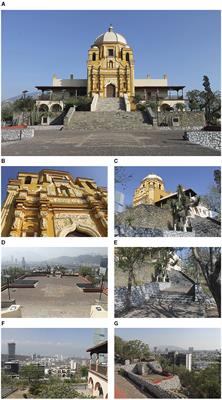Discovering the sensory, emotional, and interactive experiences of a place
This article proposes a data collection technique for describing experiences of a built environment.

Besides the experiences of the visual and physical aspects of the place, this technique helps describe the sensory, bodily, emotional, interactive, and social experiences occurring during the human-environment encounter.
The enabling technique presented is called Reactions and Actions Description Survey (RADES). It employs 120 images depicting people going through different situations involving all the senses, showing expressions related to positive and negative emotions, and realizing varied activities. Forty-five participants visited the esplanade in the exterior of a historic building called Obispado.
The case study is located on a hill and is a scenic viewpoint of Monterrey, Mexico.
The participants answered the RADES and the Environmental Description Survey (ENVIDES), which focuses on describing the qualities of the place and the appraisals with which it is experienced.
The comments about the experiences of the place obtained through both surveys were grouped into 133 categories. Qualitative and quantitative data about the experiences of the place were obtained through both techniques. A quantitative analysis of the data was realized since the participants not only described their experiences with words but also indicated numerically the intensity of such experiences. Spearman correlations between the experiences were calculated, and a general map of the experiences of the place was created through Multidimensional Scaling Analysis (MDS).
The study revealed the connections between the elements and qualities of the site and the views with specific positive and negative experiences occurring during the visit. Furthermore, MDS allowed the discovery of ten dimensions of environmental experience: pleasure/displeasure, high/low arousal, dominance/submissiveness, knowing/inhabiting, environment/self, higher/lower cognition, spatiality/materiality, states/processes, natural/built, and visual/sensory.
Read the full article at the original website
References:
